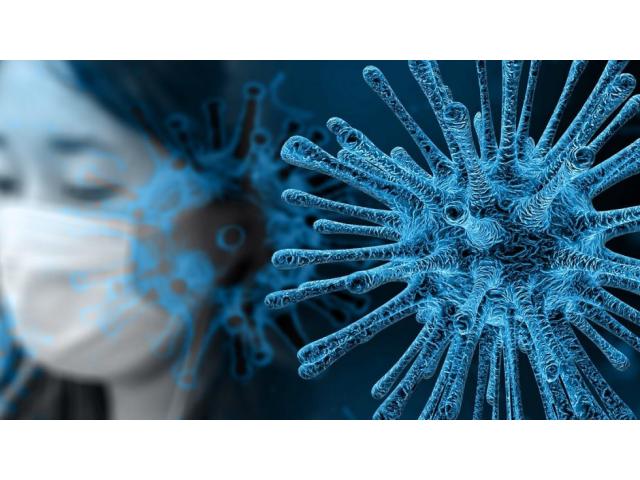Coronavirus Puts UV in the Disinfectant Spotlight
May 19, 2020 -- The coronavirus pandemic has breathed new life into a decades-old technique that can zap viruses and bacteria: ultraviolet light.
Hospitals have been using it for years to cut down on the spread of drug-resistant superbugs and to disinfect surgical suites. But there is now interest in using the technology in spaces like schools, office buildings, and restaurants to help reduce coronavirus transmission once public spaces are open again.
“Germicidal ultraviolet technology has been around for probably 100 years and has had good success,” says Jim Malley, PhD, a professor of civil and environmental engineering at the University of New Hampshire. “Since early March, there’s been just an enormous amount of interest in it, and research funding to institutions around the world.”
The kind of light that’s used, ultraviolet C (UVC), is one of the three types of rays given off by the sun. It is filtered out by the ozone before it can get to life on Earth, thankfully: Though it can kill germs, it can also cause cancer and destroy our DNA and the corneas of our eyes.
That is the current dilemma with the use of UV technology, Malley says. It has great potential, but it can cause serious permanent damage.
The sanitizing effects of UV lights have been seen with other coronaviruses, including the one that causes severe acute respiratory syndrome (SARS). Studies have shown that it can be used against other coronaviruses. One study found at least 15 minutes of UVC exposure inactivated SARS, making it impossible for the virus to replicate. New York’s Metropolitan Transit Authority announced the use of UV light on subway cars, buses, technology centers, and offices. The National Academy of Sciences says although there is no concrete evidence for UV’s effectiveness on the virus that causes COVID-19, it has worked on other similar viruses, so it would likely fight this one too.
Malley’s lab is doing research on how well UVC can sanitize devices and protective gear that first responders use, and have recently been forced to reuse, like N95 masks.
Since the interest in UVC spiked, Amazon announced the creation of an ultraviolet robot: a metal frame on wheels equipped with ultraviolet tube lights, meant for use in Amazon warehouses and Whole Foods stores. Other products, like UVC hand wands, are meant for at-home use. There are several portable UV sanitizing devices whose manufacturers claim they kill 99.9% of bacteria and viruses on phones, pacifiers, and other surfaces that can get contaminated.
Despite the potential in commercial UV use, many germicide experts have little faith in home products. They aren't regulated, nor have they been studied sufficiently by scientists, says Charles Gerba, PhD, a microbiologist and professor at the University of Arizona who has earned the nickname "Dr. Germ."
"If someone were to ask me whether they should invest in a home UV light, I wouldn't do it right now," he says. "There's just not enough data on them, and there's a lot of room for user error."
It is unlikely that just quickly scanning a surface with a hand-held device will do any significant damage to viruses or bacteria, he says.
Malley cautions that many people misunderstand how hard it is to come up with useful UVC technology. He says some products on the market -- in particular those that cost less -- don’t work well.
“It takes good engineering and science to develop it correctly,” he says. “You get what you pay for.” Although some of these may be effective, “there’s a lot of rubbish out there,” he says.
Companies that specialize in UV products exclusively have come out with new products in the last few months marketed for use against COVID-19, though no conclusive research has been done. UV Angel, a pathogen control company in Grand Haven, MI, unveiled two products in April and has seen a huge uptick in interest from markets outside the health care realm.
“We've had a 100% increase in interest -- normally we'd primarily deal with hospitals and doctor offices. But now, we're not only selling in those markets, we're also hearing a lot more from call centers, office buildings, schools, fast-food restaurants, and coffee shops,” says Linda Lee, DrPH, chief medical affairs and science officer for Angel UV.
But safety concerns remain, and some researchers have already started examining ways to harness the destructive properties of UV light while suppressing the dangers.
David Brenner, PhD, director of the Center for Radiological Research at Columbia University, says there is a narrow band of UV light called “far-UVC” that can kill viruses without getting through living skin cells.
Far-UVC’s wavelength is shorter than conventional germicidal wavelength -- about 222 nanometers, rather than 254 nanometers. Brenner was studying this type of light to kill influenza before COVID-19 hit.
Although it is possible to use UVC when people are out of harm’s way -- as hospitals have done in operating rooms after hours, and New York’s Metropolitan Transit Authority is doing on subways -- there needs to be an effective way to use this technology while people are around to help reopen the economy, Brenner says. He envisions the use of safe overhead far-UVC lamps in indoor spaces like doctors’ offices, schools, shelters, airports, and airplanes.
Research awaiting peer review has already said that far-UVC is good for fighting two other types of airborne coronaviruses.
Several companies are making far-UVC lamps, though approval by the FDA and Environmental Protection Agency will take several months, Brenner says. These lamps run between $500 and $1,000.
Brenner is 40 weeks into a 60-week study exposing mice to far-UVC for 8 hours a day, 5 days a week, and there have been no harmful effects, he says.
“In terms of the back end, things are rapidly speeding up,” he says. “In February, if you wanted to buy some of these UV products, you couldn't. If you wanted to now, it's difficult -- but by the end of the year, it’ll be much more feasible. The companies are stepping up fast.”
Malley offered a checklist people can use if they are considering at-home products:
- Check to see if the device has a track record in home medical device disinfection, such as disinfecting CPAP masks, or if it has a commercial track record, such as being used to decontaminate DNA samples in a lab.
- You get what you pay for. Any device selling for under $150 is probably not effective or reliable. Most quality devices are probably closer to the $300 to $500 range or higher.
- If the device is some sort of wand or manual light you shine on a surface, its instructions need to note how close you should hold it to the surface, how long you need to hold it there, and how much area it can treat when held in that one location for that amount of time.
- Lack of a user’s manual, lack of customer and technical service departments that can be contacted, and lack of performance data from independent testing labs all suggest it will not be a good purchase.
Vir: WebMD, Coronavirus Puts UV in the Disinfectant Spotlight, 19.5.2020





